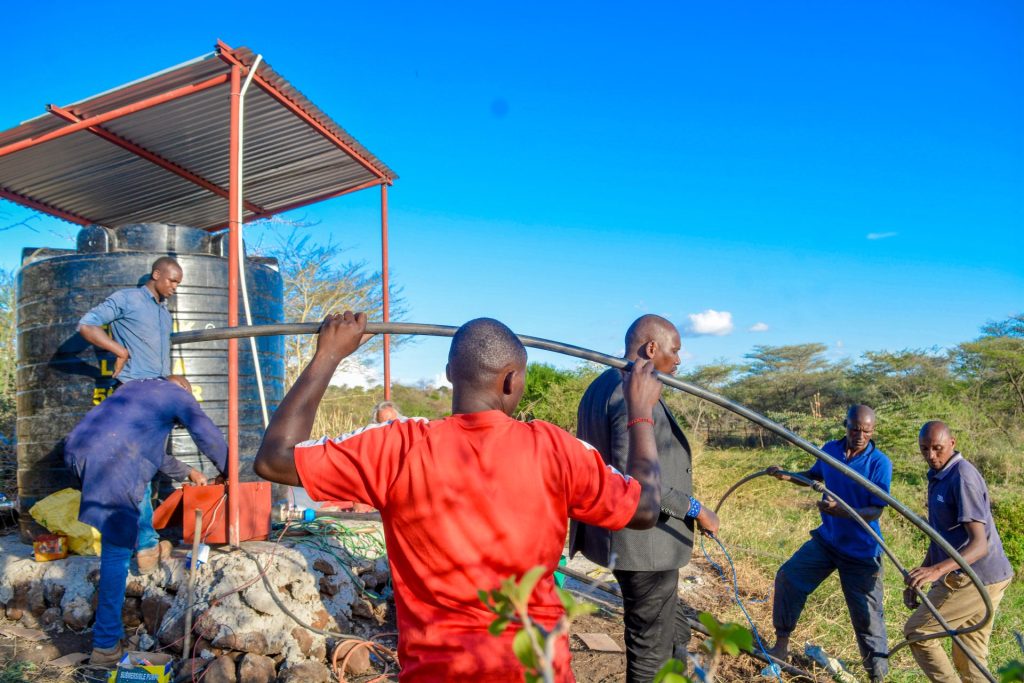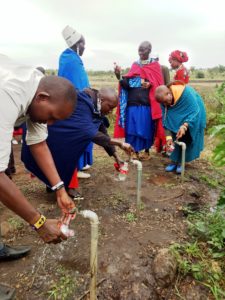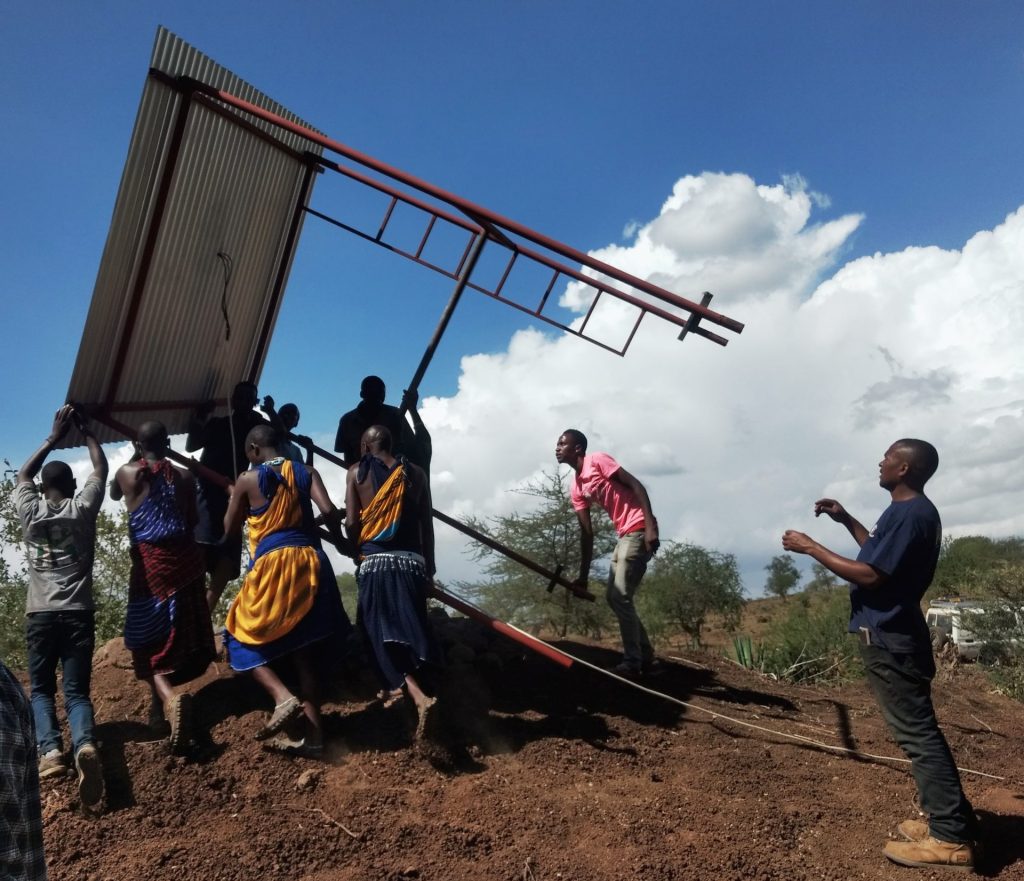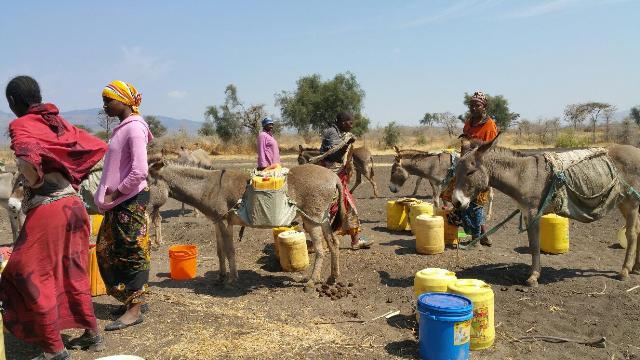Bringing safe water to the communities
Clean water project in Tanzania
Water safety is essential to a good quality of life.
The smoke removal capacity of the International Collaborative stove does a great deal to save the 25 children per 1000 who would otherwise die of lung disease before the age of five.
But there are other health issues we see in ICSEE Project villages. Village health officials tell us that 35 children out of 1000 die before the age of five from waterborne disease.
The prevention of waterborne diseases lies in getting the pathogens out of the locally-sourced water. The Maasai women bring water home to their families that they collect at rain-filled surface ponds. These ponds are seriously infected by E.coli and other pathogens.
Many people don’t realize how dangerous the water is for themselves and their children. Heating the water to pasteurize is not an option because of the expense and extra firewood that would be needed.
Practical considerations in water sanitation work
Water purification is one of the areas flooded with innovations and experimental programs, especially in poorer countries. In addition to bacteria and parasites, there can be too much fluoride or arsenic in the water as well.
One reason for all this innovation is that many agencies think they might be able to keep costs down by exploring new ideas.
The ICSEE(T) prioritizes targeting the primary killers, including bacteria and other living organisms. All over the world, people access safe water through town or city chlorination programs. The International Collaborative decided to explore chlorination as a practical approach for rural communities where women gather water.
We first learned of programs addressing polluted rural water with chlorination from Kate Cincotta of Saha Global. She works with women in Ghana. Their chlorination plan is quite different from ours, and does not produce safe water right at the source.
Instead, Kate helped established small businesses for women who gather dirty water, treat it, and sell it to other women. In our solution, women simply collect safe water at the same location every morning where they were collecting polluted water before.
Although the ICSEE(T) approach is different, we also find the chlorination approach best and thank Kate and Saha Global for sharing their experience.
Getting started with water chlorination
The ICSEE(T) completed and fully tested the water system pilot program in 2018, proving it to be a practical concept. The ICSEE(T) continues to design safe water systems adapted to each water source, and to the way the local women gather and use water.
The pilots began with a small pond in Mbuyuni used by 40 families. The families had worked together to enlarge a natural depression where rainwater collected. While the level changes with the season, the pond normally has water all year round. We built a demonstration chlorination system outside at our office in Monduli, and invited the people who use the Mbuyuni pond to come and see it, and let us know if they wanted such a thing. They said yes!
The families and the International Collaborative spent two exciting days installing the first system. It produces 2000 liters per day of safe water—enough for the 40 families. The system uses a portable pump powered by a solar panel and battery. The couple managing the system fills the settling tank each evening with pond water.
By morning, the alum has cleared the 2000 liters of water. The clear water is then allowed to flow into a second tank for treatment with the calcium hypochlorite, and it is stored there. Finally, a buried pipe takes the safe water to a faucet for the women. They are very happy with the resulting water and its convenience and quality.
The alum and chlorine chemicals cost only $0.25 a month per family, so their cost is completely negligible.
The ICSEE(T) water project in Mbuyuni now has four systems installed and managed by local water user’s collectives. Together, the four provide 20,000 liters a day of safe water for 500 families.
This is rural East Africa, and elephants roam the Mbuyuni area. They are powerful and independent, but have not interfered with our systems except for knocking down fences that kept them away from things they wanted to eat. Our faucets are in solid concrete and most pipes are underground.
We also developed a water pilot system in the village of Lepurko. The dam that holds the water there has collapsed due to flooding, but we are rehabilitating the system there and soon they will have good water again. It is fenced and livestock are kept out, improving the quality of the water as well.
The people of Oltukai village raised 5 million shillings ($2,200) and we added 4 million ($1,750). Together, we installed a 10,000 liter-a-day system there. If more funds can be brought to us, we will add a fence around just the end of the pond near the pump intake. The villagers need the rest of the pond to be open for livestock watering.
Scaling up safe water projects
The International Collaborative can always use additional funds to support the spread of these safe water projects. We have tried to get government cooperation in funding, but they normally use their health appropriations for building clinics and providing housing for doctors and nurses near them. There are 220,000 Maasai in Monduli district alone and preventative medicine of this kind is urgently needed.
Sanitation needs in rural Africa
Rural Africa’s water sanitation needs are no exception to those solved by chlorination, worldwide. The chemical approach is preferable to other treatments, such as those using filters or radiation, because chlorinated water does not get immediately re-infected when it comes into contact with bacteria. This is because the chlorine that killed the bacteria at the time of first treatment is still there, protecting the water for at least a few days. Because there are pathological bacteria all around, this is an important consideration. Containers from home or even a child’s unwashed hands can easily re-infect water treated without chlorine.
Reasonable costs for a tried-and-true solution
Costs are low to operate a basic silt-settling and chlorination system. The chemicals used, including calcium hypochlorite and alum are very inexpensive and readily available in Arusha, the major city nearby. The equipment, tanks, pipes, solar panels, batteries, and pump cost about $35 per family for installation. The Project shares that cost with the families that will be using the clean water generated by each system, to the extent that they can afford to help.





